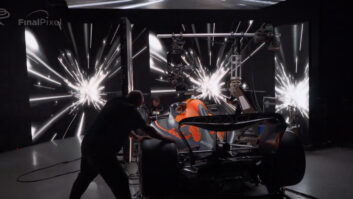
Out in the R&D ether, a vector-based video codec is about to be created that could well point to the death of the pixel. Maybe in as little as five years’ time.
The players behind this project are Bath University, Root6 Technology, Ovation Data Services from the oil and gas industry, and the London facility house Smoke & Mirrors. The driver behind inventing this technology for vectorising moving media – a life’s work – is Professor John Patterson.
Explaining that Root6 joined the project two years ago, responsible for providing the processing pipeline, MD Marcus Hume-Humphreys said: “Bath have patented the underlying technology within the last two months. John understands that this is the Holy Grail. The core vector technology is developed within academia, and we are the bridge to the end user.
“With the prototype codec we think we are ready to produce some media for the golden eyes of the industry,” he added.
The Bath prototype works in seconds per frame rather than frames per second at present, but Root6 has a prototype pipeline in place. This is not ground breaking, but required high bit depth support. What apps will this technology score in?
“One way is in frame rate conversion – still an enormous nightmare. If you are dealing with vectors that are changing over time, the notion of frame rates is not something you are necessarily bound by,” said Hume-Humphreys.
This is where Mark Wildig, the CTO of S&M comes in. A master format from which you can derive things without a process of standards conversion could save significant money and time.
“This is wicked, just revolutionary,” he said. “It is like when we had gas lamps and somebody invented the electric lamp. How much money have we spent trying to do image recognition with pixel-based frames? Billions of pounds!
“It is not because we are not developing the right software, it is because we have got the wrong underlying technology,” he added. “It needs turning on its head because the pixel-based products we have in postproduction have stagnated. We cannot do anything more to the pixel.”
Hume-Humphreys concluded: “This will not be a gradual migration. It will be flick of the switch, like the analogue/digital thing.” – George Jarrett






